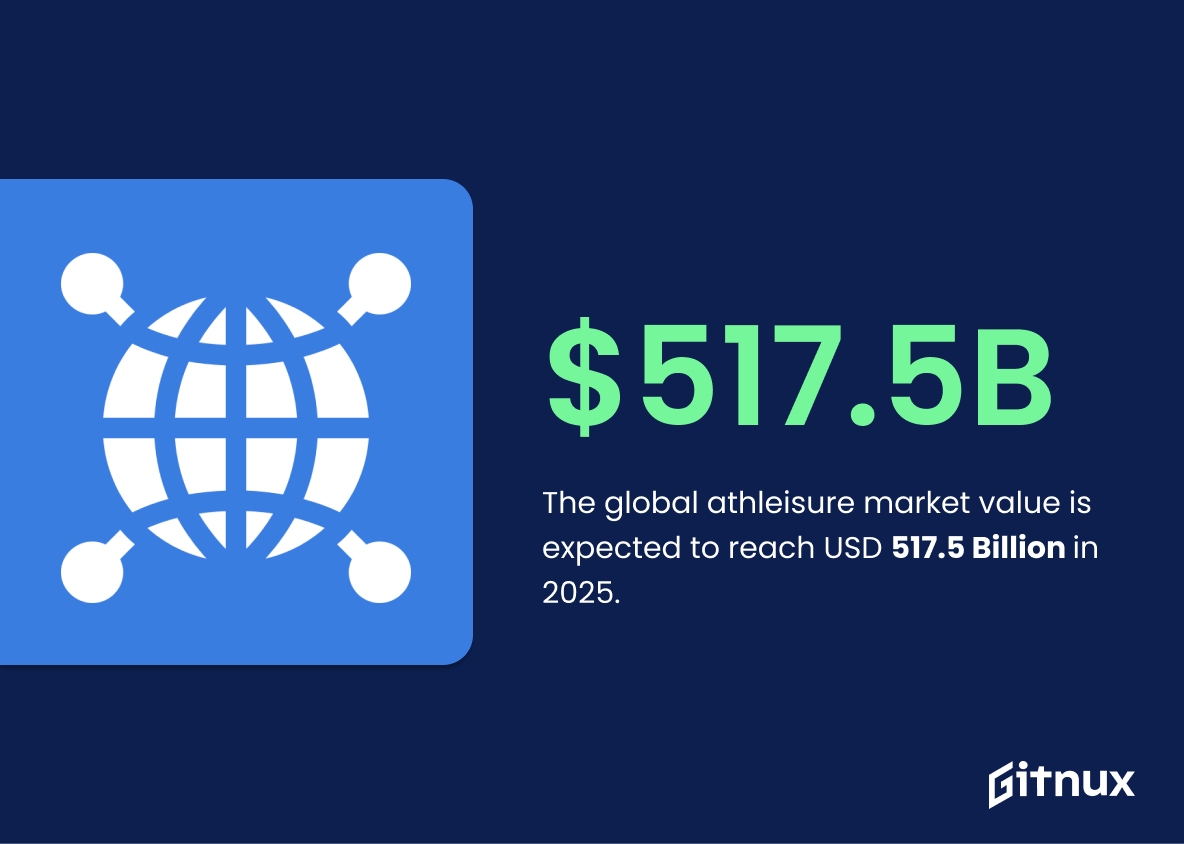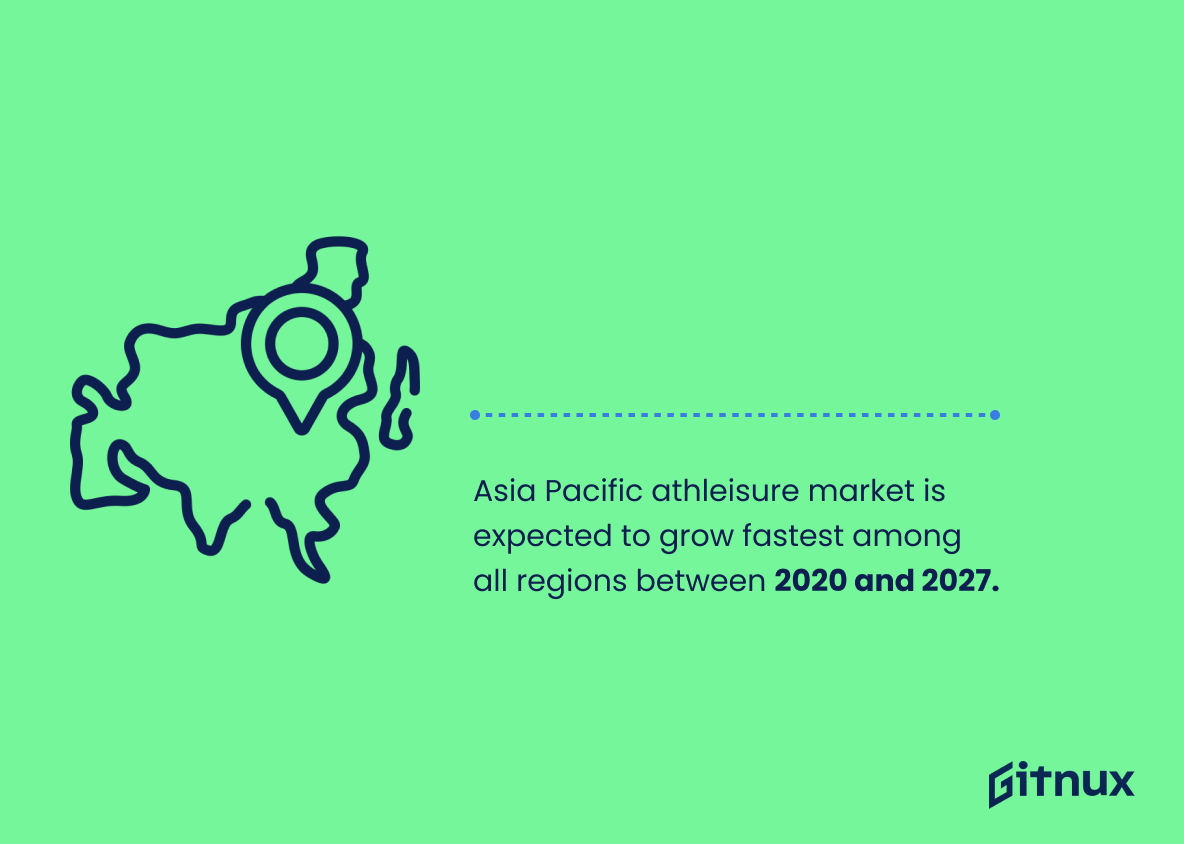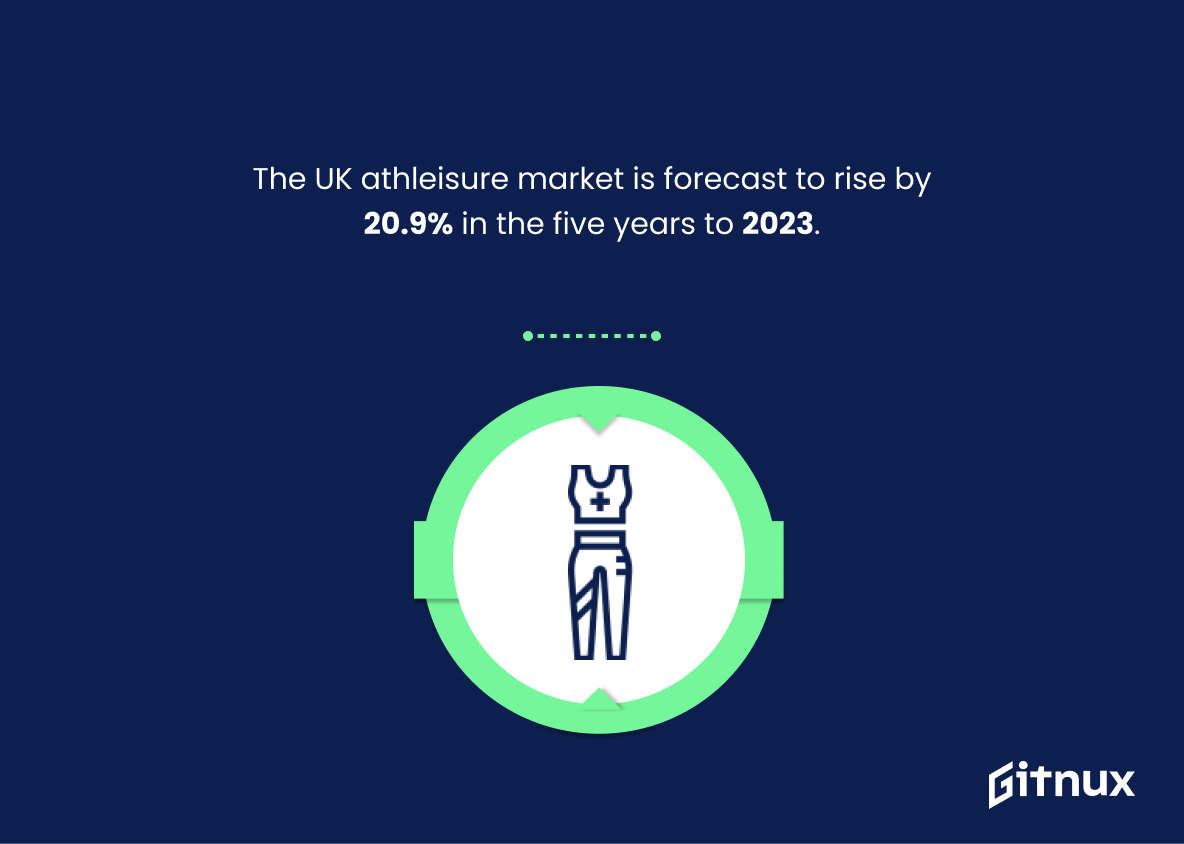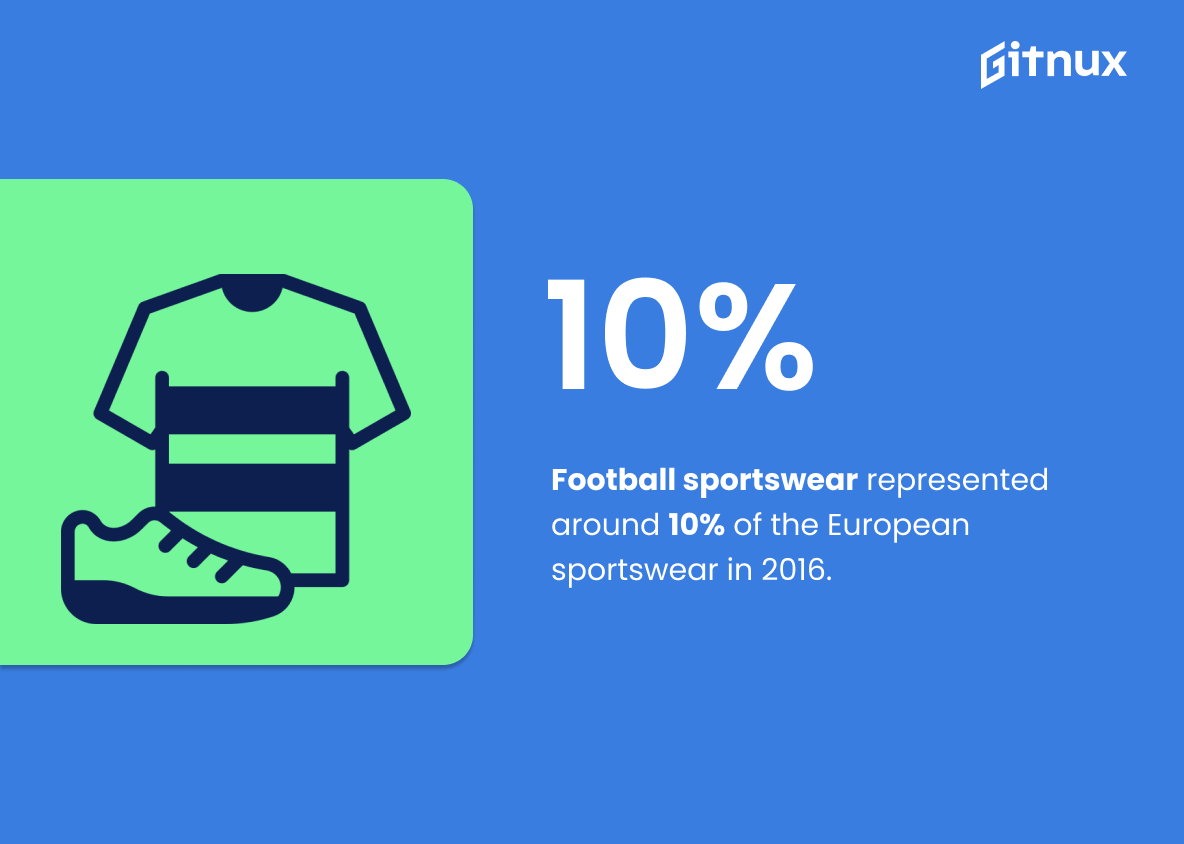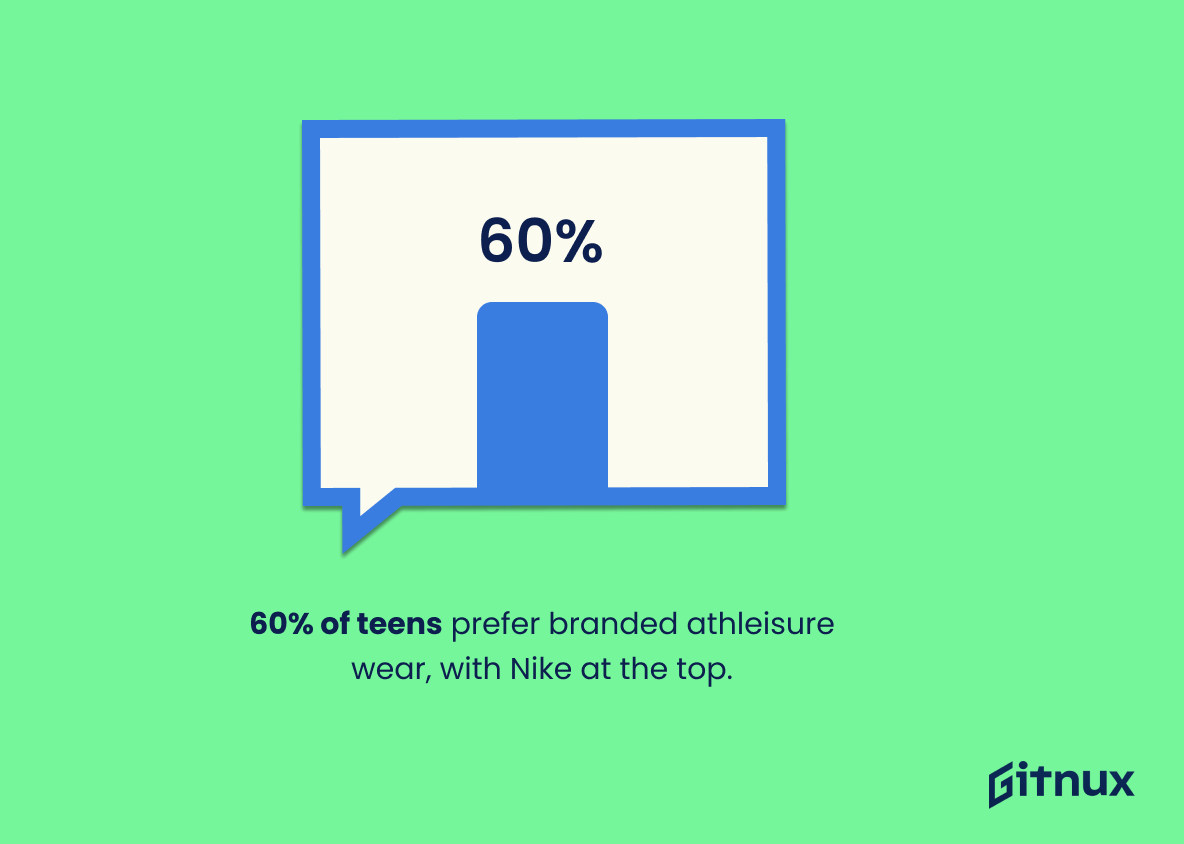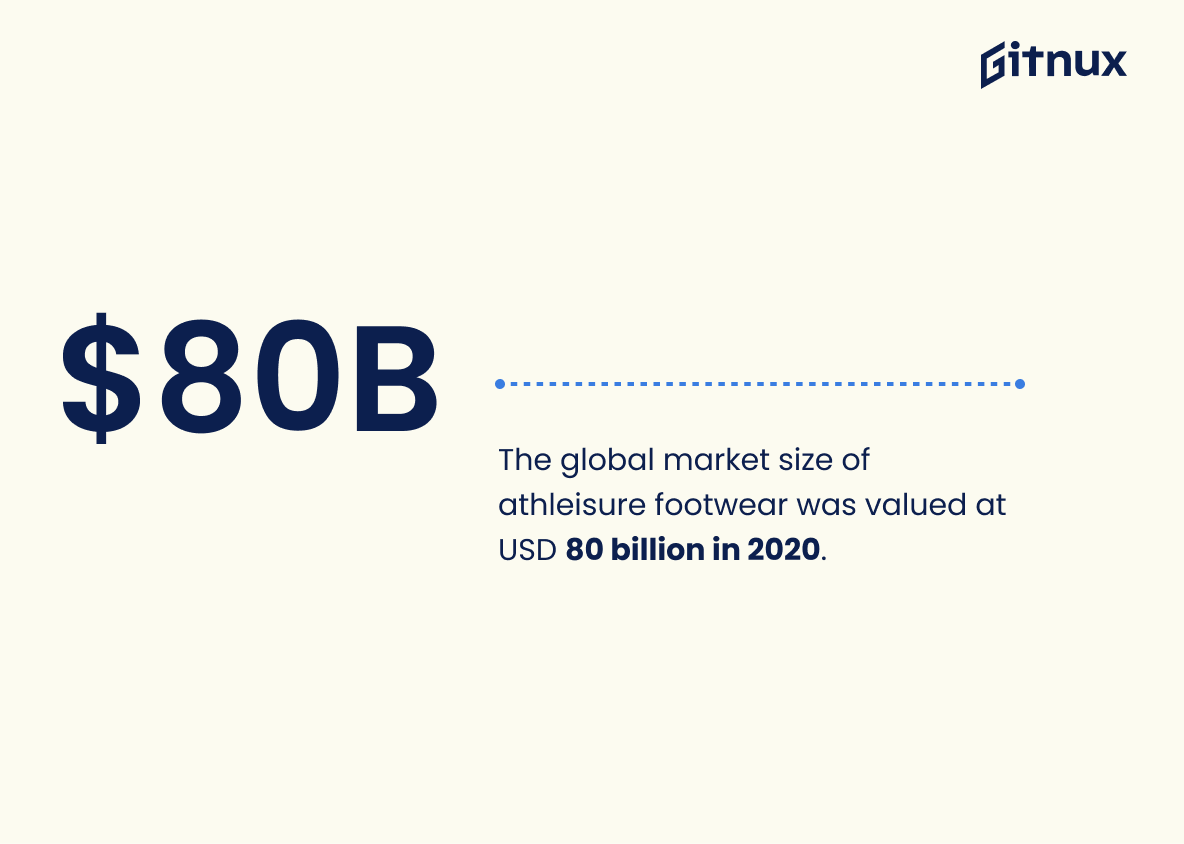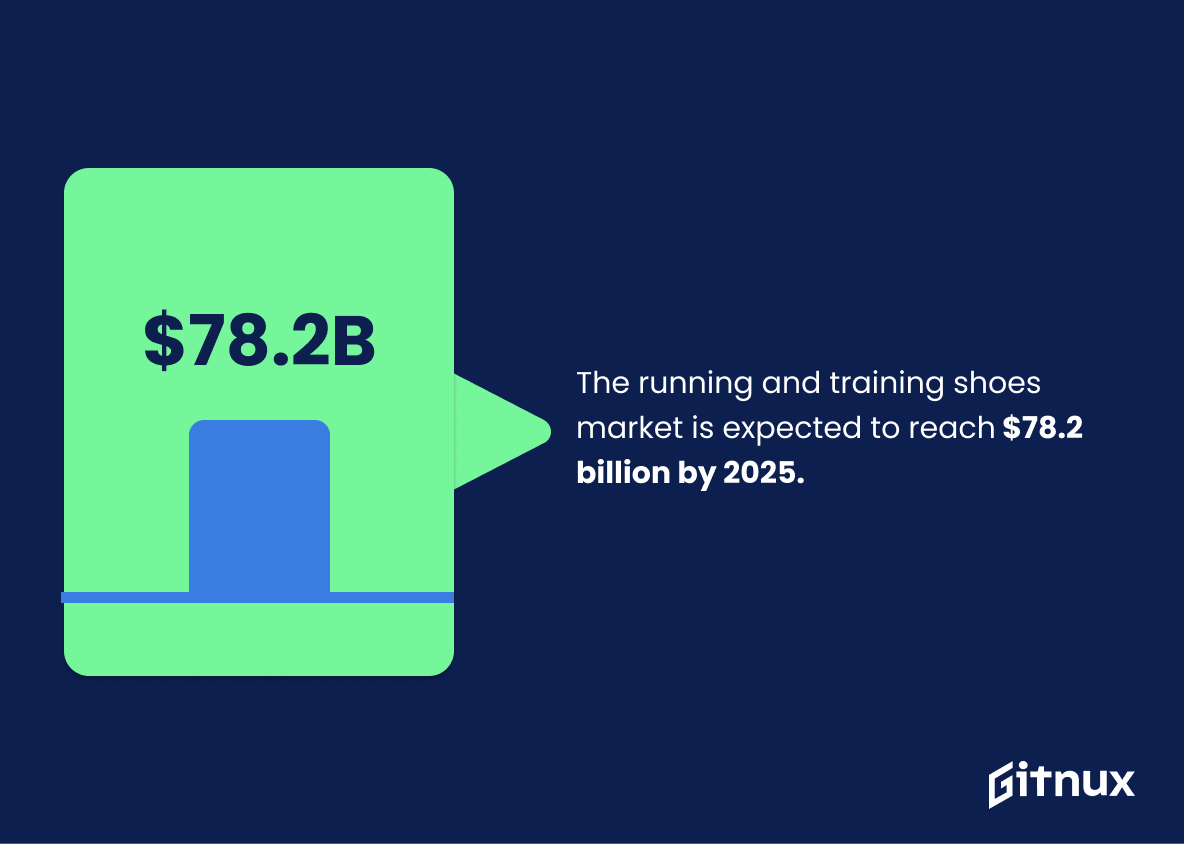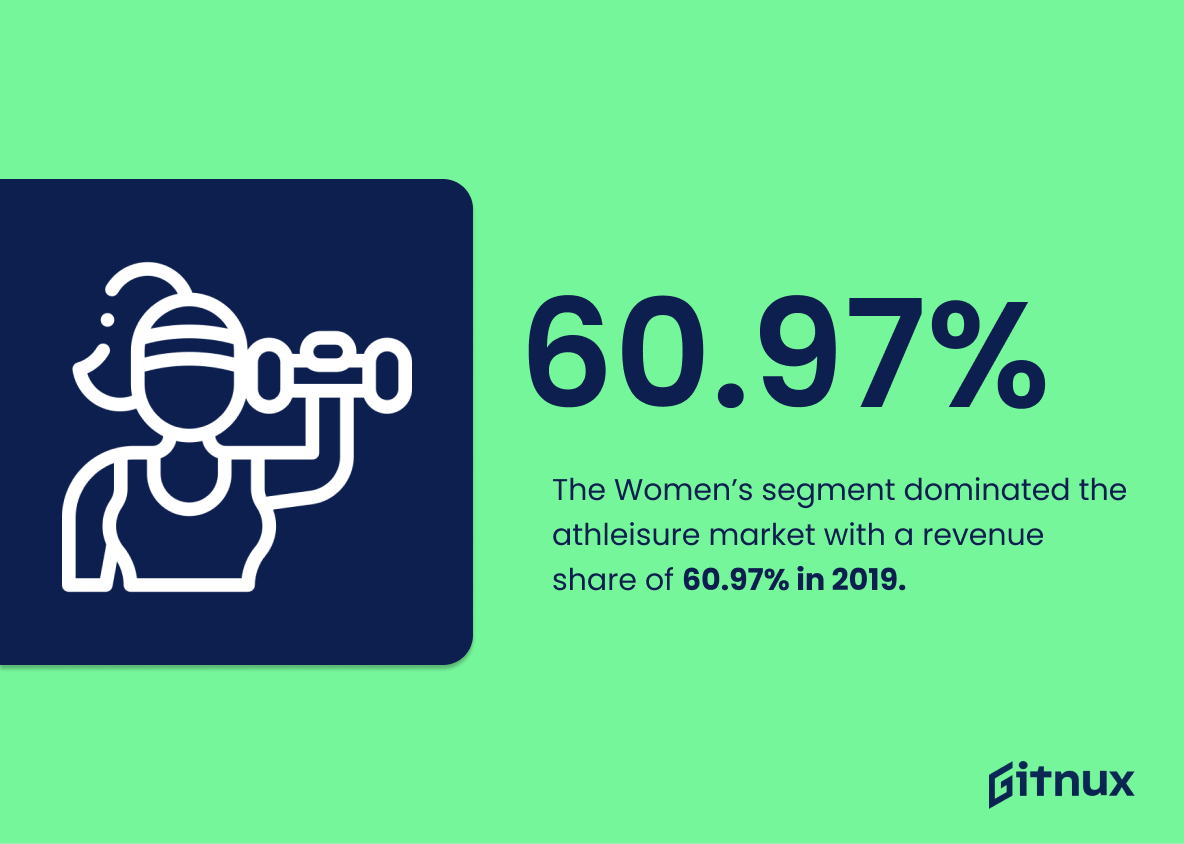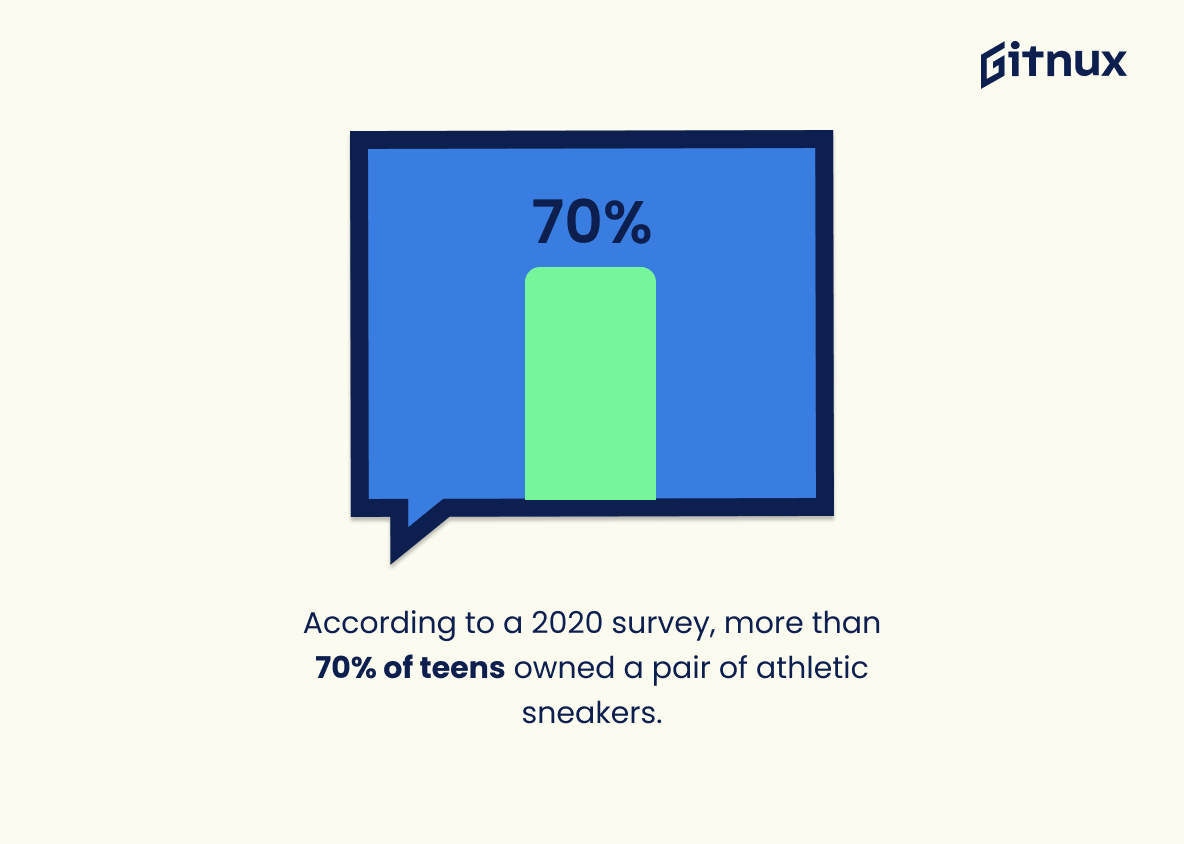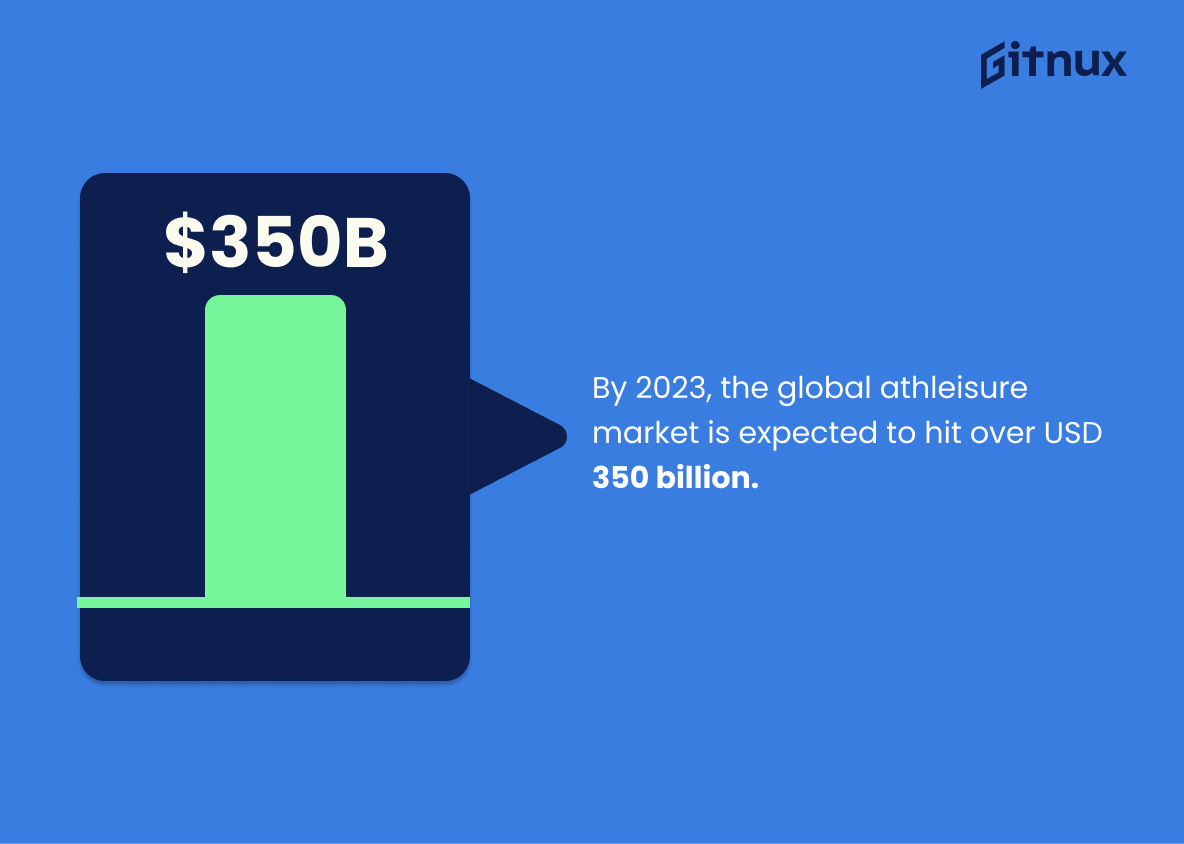If you’ve ever found yourself marvelling at the seemingly unstoppable growth of leggings and sports bras in everyday attire, then you’ve been witnessing the phenomenal rise of the athleisure industry. The line between fitness apparel and everyday clothes is increasingly blurring, captivating fashion enthusiasts and fitness fanatics alike. Join us as we don our most comfortable sneakers and delve into the fascinating world of athleisure industry statistics.
We’ll navigate through the numbers, analyze trends, and forecast future growth, providing critical insights to marketers, designers, business owners, and all those captivated by this prominent fashion trend.
The Latest Athleisure Industry Statistics Unveiled
The global athleisure market value is expected to reach USD 517.5 Billion in 2025, growing at a CAGR of 8.1% from 2019.
Painting a provocative picture of the future, this breathtaking prediction of the global athleisure market’s trajectory towards a staggering value of USD 517.5 billion by 2025, canters at a rigorous Compound Annual Growth Rate (CAGR) of 8.1% from 2019. This subtle yet compelling revelation acts as a guidepost for entrepreneurs, investors, and designers alike, who are eager to tap into the pulsating demand within the athleisure industry.
This insightful preamble, which serves as a marketplace headline, is vital in underscoring potential growth patterns, charting trends, and identifying untamed opportunities in the industry. As such, it acts like a beacon illuminating the way for future in-depth conversations about the potential powerhouse the athleisure industry is poised to become.
In 2020, U.S athleisure sales reached $105.9 billion, a 29% increase from five years prior.
The brilliant glow of the athleisure industry can be witnessed by diving into the depths of its figures from previous years. The fact that U.S athleisure sales shot up to $105.9 billion in 2020, boasting a robust 29% increase from sales five years earlier, paints a vivid picture of the industry’s monumental growth.
This economic rocket lift-off isn’t just a testament to the burgeoning love for fitness and comfort gear, but also a testament to the industry’s ability to navigate consumer trends and demands in an era of home workouts, quarantine, and increased demand for comfort. So if one is seeking an intriguing investment, or looking to make a fashionable splash, those numbers are a siren song to the energetic, health-focused, and prospering universe of athleisure.
Asia Pacific athleisure market is expected to grow fastest among all regions between 2020 and 2027.
Highlighting the projected growth of the Asia Pacific athleisure market between 2020 and 2027 serves as a beacon, signalling immense potential and lucrative opportunities in this region. It’s akin to unearthing a hidden treasure, luring businesses and investors interested in the athleisure industry towards Asia Pacific.
The thrill of this statistic lies in the anticipation of a boom in demand and the possible monetary rewards that could ensue. Furthermore, it casts a spotlight on shifting consumer trends and tastes within this region, offering valuable insights for new product development, strategic marketing and future investment in the athleisure sector.
Approximately 28 percent of US consumers stated that most of the clothes they wear are sportswear in 2020.
Unveiling the impressive reveal that nearly 28 percent of US consumers had confirmed their wardrobe as predominantly sportswear in 2020 crafts an intriguing narrative. This data point anchors the blooming demand and staggering growth of the Athleisure industry. It helps to decode the fashion paradigm shift towards comfort and functionality, providing a clear indication that sportswear has sprinted far beyond gym walls into everyday routines.
Additionally, it asserts a compelling evidence for industry stakeholders, enabling robust marketing strategies development, product lines expansion and optimal consumer targeting, while offering an insight of the booming trend and future projections in the Athleisure industry.
The UK athleisure market is forecast to rise by 20.9% in the five years to 2023.
Peering into the crystal ball of industry trends, it’s startling to note one particular prophecy – the staggering 20.9% surge predicted for the UK athleisure market within a span of five years, up to 2023. A hard-hitting data analysis spotlighting the future, this anticipatory statistic promises the unfolding of a thrilling growth narrative for the athleisure industry.
The potential implications of such amplified market growth are manifold. On one hand, it indicates a promising landscape for existing businesses and startups looking to invest further into this fashion sector. On the other, it signals that UK consumers are increasingly gravitating towards a hybrid of comfort and style, ultimately redefining the dynamics of the overall fashion industry. For those crafting strategies and forecasting trends, this statistic truly stands as a powerful compass leading to a future of lucrative opportunities in the athleisure realm.
Football sportswear represented around 10% of the European sportswear in 2016.
Shedding light on the intricacies of the Athleisure industry, this gem of data, that football sportswear made up approximately 10% of the European sportswear market in 2016, presents a powerful marketplace trend. Specifically, such information underscores football’s market influence and its potential as driving pillar within the overall sportswear segment.
The remarkable 10% share that football sportswear commanded in the European market gives readers a tangible sense of how individual sports like football can shape the direction of trends within the larger Athleisure industry. It serves as a vivid illustration of the industry’s dynamic landscape and offers valuable insight into the conducive environment for sports-specific wear in Europe. This could be a beacon for brands and investors targeting to scale up within the highly evolving Athleisure market.
About 60% of teens prefer branded athleisure wear, with Nike at the top.
Delving into the intriguing world of Athleisure Industry Statistics, an intriguing revelation surfaces – approximately six out of every ten teens show a marked preference for branded athleisure wear, crowning Nike as their unequivocal favourite. The relevance of this data is multifaceted.
For starters, it provides a compass directing brand positioning and marketing strategies for companies within the industry. They are presented with the valuable insight that targeting teenagers, who show a consistent tendency towards branded merchandise, could boost sales significantly. Secondly, Nike’s predominance in the heart of teens can serve as a case study platform for other brands. By analyzing the brand’s entrails, they can glean marketing strategies, influencing factors, as well as winning formulas that can be adapted to their brands.
Furthermore, to investors and industry analysts, this data offers crucial cues about the industry’s health, potential growth areas, and profitable ventures. The active interest of teenagers, a demographic with rapid growth in purchasing power, portends sustained growth and potential profitability in the industry. The accessibility and comprehensibility of this relevant statistic could just be the key to unlocking the myriad opportunities in the ever-evolving athleisure landscape.
The global market size of athleisure footwear was valued at USD 80 billion in 2020.
Bearing witness to the Herculean stride of the athleisure industry, one cannot overlook the heavyweight figure of USD 80 billion. More than a mere number, this represents the 2020 valuation of global athleisure footwear. This monolith stands as an invincible testament to the mounting popularity and the relentless growth of the sector.
It offers a titanic gauge to any businessman, trend-spotter, or interested reader of the sheer worth and potential of this arena. By understanding this cornerstone statistic, a vivid picture of the athleisure kingdom is painted – a tableau of influencers, innovation, and a world of consumers wanting both style and comfort. Let your eyes feast on this imagining, for this is the world where USD 80 billion has been, and could perhaps be again.
The running and training shoes market, a key segment of athleisure industry, is expected to reach $78.2 billion by 2025.
Delving into the numerical heart of the athleisure industry, we find an intriguing and promising insight: the anticipated surge of the running and training shoes market to a phenomenal $78.2 billion by 2025. This projection isn’t just an impressive financial figure; rather, it serves as a beacon of the industry’s growth potential and future commercial health.
In the kaleidoscopic mosaic of athleisure industry analytics, this prediction stands tall. It illuminates the flourishing demand for fitness-centric footwear, embodying the impressive strides the industry is envisioned to make in the coming years. The number itself could potentially act as the pulse of the market, giving an insight into consumer behavior, preference shifts, and the undeniable trend towards health and fitness styled clothing and accessories.
Imagine this statistic as a compass guiding the business strategies of both new entrants and established players. It offers a compelling picture of opportunities in the industry, decisively influencing marketing, investment, and product development plans. It also enables readers of the blog post to comprehend the substantial role of running and training shoes within the broader scope of athleisure – a validation of the power this segment holds in shaping the industry’s trajectory.
In conclusion, this statistic is equivalent to a loud drumroll announcing the feature performance in the grand spectacle of the athleisure world – the running and training shoes market. Its impressive forecast not only underscores the continuous growth and optimistic future of the athleisure industry but also underscores the significant shift towards a more active and health-conscious lifestyle.
In 2020, athleisure products accounted for a quarter of total apparel sales.
Highlighting that a massive one-fourth of all apparel sales in 2020 were dominated by athleisure products is an insightful revelation. This figure is a testament to the profound resonance of athleisure style with contemporary consumers.
In the context of a blog post about athleisure industry statistics, this significant portion underscores the surge in the adoption of a more comfortable, fitness-oriented lifestyle. It further illuminates the promising potential and growth prospects of the athleisure industry, hinting towards the rising trend and the ample market penetration opportunities within this realm.
The Women’s segment dominated the athleisure market with a revenue share of 60.97% in 2019.
Reflecting on the significance of the stated figure, ‘The Women’s segment dominated the athleisure market with a revenue share of 60.97% in 2019,’ one can unlock several crucial insights that shape understanding of the Athleisure Industry. Firstly, the notable domination of the women’s segment emphasizes the compelling trend in which females have embraced athleisure as their wardrobe staple. Monetary figures translate into the market’s language, endorsing the potent buying power of women.
Furthermore, this hefty revenue share suggests the female demographic may have been responding positively to the athleisure style trend, possibly due to its unique combination of comfort, function, and fashion. Examining this statistic, one could infer that the demand for women’s athleisure may continue to propel, presenting exciting opportunities for brands in the industry.
Consequently, any stakeholder within the athleisure industry, from manufacturers to marketers, could leverage this numerical nugget to strategically fine-tune their approach. Innovation catering to this dynamic segment might well be the key to secure a competitive edge in the fast-paced athleisure realm. Essentially, this statistic paints a profitable picture, broadening the vision to foresee the textures of success in the athleisure industry.
According to a 2020 survey, more than 70% of teens owned a pair of athletic sneakers.
The wave of athletic sneakers popularity among teens, as revealed by the 2020 survey, lights up a neon sign for the athleisure industry. With over 70% of teens donning athletic sneakers, it’s clear evidence of how the line between sportswear and casual fashion blurs and reflects the booming growth of the athleisure market.
By tapping into this teen preference for sports-influenced footwear, an exciting opportunity opens up for industry stakeholders to elevate their strategies, design approach, and marketing tactics. It’s not just a statistic, it’s the echo of the athleisure trend resonating within the halls of youth culture. Such powerful dominance of athletic sneakers in teens’ closets nudges industry leaders and emerging players to scale up, innovate, and lead the sneaker game to tap into this growing demand.
India’s athleisure market is expected to grow by 19.5% compound annual growth rate (CAGR) from 2021 to 2025.
Highlighting India’s projected 19.5% compound annual growth rate (CAGR) of the athleisure market from 2021 to 2025 provides a dynamic insight into the promising expansion of this sector. It captures the potential scope, presenting a powerful narrative of lucrative investment and marketing opportunities.
Authors may find this data useful as it underscores the trend of consumers veering towards comfortable and versatile clothing, bridging the gap between performance gear and everyday attire. Altogether, this numeric revelation makes a strong case for India being a hotbed for innovators, retailers and investors in the global athleisure industry.
By 2023, the global athleisure market is expected to hit over USD 350 billion.
Delving into the figure of USD 350 billion, projected for the global athleisure market by 2023, showcases the colossal potential this industry commands. It does more than just paint a picture of broad strokes; it reveals an intricate tapestry of rapid industry growth, massive consumer demand, and explosive market potential.
This unprecedented leap towards the 350 billion mark casts a spotlight on the fact that athleisure is no longer an emerging trend but a powerful player in the global fashion industry, proving it’s a topic well worth exploring in our blog post about Athleisure Industry Statistics.
Lululemon, a key player in the athleisure industry, increased their e-commerce sales by approximately 157% in 2020.
Transforming the landscape of the athleisure space, Lululemon’s massive e-commerce sales growth of approximately 157% in 2020 stands testament to the dynamic shift in consumer preference and purchasing behavior. It unravels a story of how the athleisure industry saw a dramatic surge in online sales, with Lululemon leading the charge.
This significant growth trend underscores the company’s effective online strategy and its remarkable resonance with modern consumers embracing both comfort and style. It serves as a solid barometer for the industry’s direction, signifying the potent amalgamation of fashion, fitness, and digital platforms in the age of remote living and working.
The ‘Online’ distribution channel segment is expected to widen at the fastest CAGR of 7.8% from 2019 to 2025 in the athleisure market.
Highlighting the anticipatory growth of ‘online’ as a distribution channel at a CAGR of 7.8% from 2019 to 2025, creatively underscores its rising importance within the athleisure market. This paramount detail adds a unique dynamic to a blog post about Athleisure Industry Statistics.
It underscores the shifting tide of consumer shopping preference from traditional brick and mortar stores to e-commerce platforms. Furthermore, it’s an economic indicator that businesses within this sphere must adapt to changing trends and increase their online presence for potential growth, forecasting an imminent digitalization of the industry.
By the end of 2021, it is expected that 31% of the U.S. population will wear athleisure clothing, amounting to over 103 million people.
Immerse yourself within the elastic curves of this compelling statistic: A startling ‘31% of the U.S. population going athleisure by the end of 2021’, a tight fit of over 103 million people. This curious fact doesn’t just hang idly; it pulls and stretches, exemplifying the explosive growth in the athleisure industry. Ponder upon it, as a spotlight illuminating the increasing preference for comfort, functionality, and style as one continuous weave in the vast American clothing landscape.
It distills the emergence of a new dress code, unquestionably vital when crafting analyses, strategies, and narratives around the athleisure market’s trajectory. Here you find a snippet of the present, and a forecast of the future, snuggly layered over the economic, cultural and fashion shifts that are knit together in this trending industry.
Conclusion
In sum, the athleisure industry is experiencing significant growth and acceptance globally. The melding of comfort, style, and functionality makes athleisure wear a highly coveted commodity among all age groups and genders. The ever-evolving trends and consumer preferences, in conjunction with advancements in fabric technology, promise further expansion for the industry.
Stay tuned to our blog for more cutting-edge insights and valuable statistics that will help you stay on top of this dynamic industry. Remember, understanding these statistics is vital for any business looking to leave their mark in the highly competitive athleisure industry.
References
0. – https://www.www.prnewswire.com
1. – https://www.www.globenewswire.com
2. – https://www.www.retaildive.com
3. – https://www.www.statista.com
4. – https://www.www.retail-week.com
5. – https://www.www.euractiv.com
6. – https://www.www.marketplace.org
7. – https://www.www.forbes.com
8. – https://www.www.beautymatter.com
9. – https://www.www.fortunebusinessinsights.com
10. – https://www.research.investors.com
11. – https://www.www.verdict.co.uk
12. – https://www.www.grandviewresearch.com
13. – https://www.www.packagedfacts.com
14. – https://www.www.happi.com
15. – https://www.footwearnews.com
